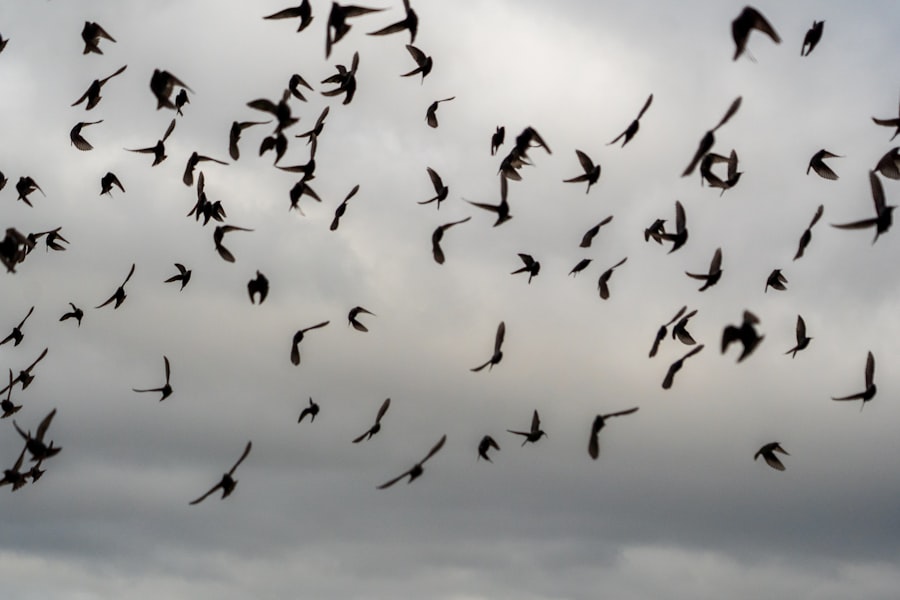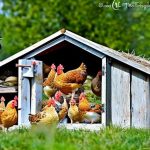Pheasants and chickens are domesticated birds from the Phasianidae family, valued for their eggs, meat, and aesthetic qualities. Pheasants are primarily raised for hunting and ornamental purposes, while chickens are more commonly kept for egg and meat production. Despite their familial relationship, these birds have distinct characteristics and care requirements.
Pheasants are renowned for their vibrant plumage, particularly in males, which display colorful feathers during courtship. They are ground-dwelling birds that thrive in open grasslands and woodlands, foraging for insects, seeds, and plants. Chickens, on the other hand, come in numerous breeds with diverse traits and appearances.
They are also ground-dwelling but demonstrate greater adaptability to various environments, ranging from backyard coops to commercial poultry farms.
Table of Contents
- 1 Differences in Behavior and Needs
- 2 Compatibility and Potential Challenges
- 3 Housing Considerations
- 4 Feeding and Nutrition
- 5 Health and Disease Considerations
- 6 Conclusion and Recommendations
- 7 FAQs
- 7.1 Can you keep pheasants and chickens together?
- 7.2 What are the considerations for keeping pheasants and chickens together?
- 7.3 What is the recommended space requirement for keeping pheasants and chickens together?
- 7.4 What should be considered in terms of diet when keeping pheasants and chickens together?
- 7.5 Are there any compatibility issues when keeping pheasants and chickens together?
- 7.6 What are the benefits of keeping pheasants and chickens together?
Key Takeaways
- Pheasants and chickens are both popular poultry species, but they have distinct differences in behavior and needs.
- Pheasants are more wild and require more space and cover, while chickens are more domesticated and can thrive in smaller areas.
- When considering compatibility, it’s important to note that pheasants and chickens may not always get along and can potentially pose challenges to each other.
- Housing for pheasants should include plenty of space and cover, while chickens can thrive in smaller, more enclosed spaces.
- Pheasants and chickens have different nutritional needs, with pheasants requiring a higher protein diet compared to chickens. It’s important to provide the appropriate feed for each species.
Differences in Behavior and Needs
Behavioral Differences
Pheasants are known for their shy and skittish nature, often preferring to hide or take cover when they feel threatened. They are also more solitary birds, preferring to forage alone or in small groups. In contrast, chickens are more social animals that thrive in flocks, displaying a pecking order within their group.
Chickens are more adaptable to human interaction and can be easily tamed and handled. This is in stark contrast to pheasants, which are more wary of human presence.
Environmental Needs
In terms of environmental needs, pheasants require more space to roam and forage due to their natural inclination to explore open grasslands and woodlands. They also prefer areas with dense vegetation for cover and protection. On the other hand, chickens can adapt to a variety of environments, from free-ranging in open spaces to living in confined coops, as long as they have access to food, water, and shelter.
Compatibility and Potential Challenges

When considering raising pheasants and chickens together, it’s important to understand their compatibility and potential challenges. Pheasants and chickens can coexist in the same environment, but there are certain factors to consider to ensure their well-being. Pheasants are generally more sensitive to stress and can be easily startled by sudden movements or loud noises.
This can lead to potential conflicts with chickens, especially if they are kept in close quarters without enough space to retreat. Additionally, pheasants have different dietary requirements compared to chickens, as they rely more on insects and plants for their diet. This can lead to competition for food resources if not managed properly.
It’s important to provide separate feeding areas for pheasants and chickens to prevent any conflicts over food. Furthermore, pheasants have specific nesting requirements and may become territorial during the breeding season, which can lead to potential conflicts with chickens if nesting areas are not properly managed.
Housing Considerations
When it comes to housing pheasants and chickens together, it’s important to provide a suitable environment that meets the needs of both species. Pheasants require larger housing areas compared to chickens due to their natural inclination to roam and forage. A spacious aviary or pen with plenty of vegetation and hiding spots is ideal for pheasants, providing them with the opportunity to display natural behaviors while feeling secure in their environment.
Chickens also require adequate space in their housing area, with enough room for roosting, nesting, and dust bathing. It’s important to provide separate nesting boxes for both pheasants and chickens to prevent any potential conflicts during the breeding season. Additionally, proper ventilation and insulation are essential for both pheasant and chicken housing to ensure good air quality and temperature regulation.
Feeding and Nutrition
Pheasants and chickens have different dietary requirements that need to be considered when feeding them together. Pheasants are omnivorous birds that primarily feed on insects, seeds, plants, and small vertebrates in the wild. In a domestic setting, it’s important to provide a balanced diet that includes game bird feed, supplemented with fresh fruits, vegetables, and mealworms.
It’s also important to provide access to grit for digestion and calcium supplements for egg-laying females. Chickens have a more varied diet compared to pheasants, as they can thrive on commercial poultry feed that is formulated for their specific needs. This feed typically contains a balanced mix of grains, protein, vitamins, and minerals to support egg production and overall health.
Additionally, chickens benefit from access to fresh greens, kitchen scraps, and calcium supplements for strong eggshells.
Health and Disease Considerations

Health Issues in Pheasants
Pheasants are particularly prone to stress-related illnesses due to their sensitive nature, so it’s essential to provide a low-stress environment with minimal disturbances. They are also susceptible to respiratory diseases such as mycoplasma and coryza, as well as parasites like mites and lice.
Health Issues in Chickens
Chickens are also vulnerable to respiratory diseases such as infectious bronchitis and Newcastle disease, as well as parasitic infestations like mites, lice, and worms.
Biosecurity Measures
Proper biosecurity measures should be implemented to prevent the spread of diseases between pheasants and chickens, including quarantine procedures for new birds, regular health checks, and vaccination programs where applicable.
Conclusion and Recommendations
In conclusion, raising pheasants and chickens together can be a rewarding experience if done with careful consideration of their behavioral differences, housing needs, feeding requirements, and health considerations. Providing a suitable environment that meets the needs of both species is essential for their well-being and overall success in a mixed flock setting. It’s important to provide ample space for both pheasants and chickens to roam and forage while ensuring separate nesting areas and feeding stations to prevent potential conflicts.
Additionally, maintaining good biosecurity practices and implementing preventative health measures can help minimize the risk of disease transmission between the two species. Overall, with proper planning and management, raising pheasants and chickens together can create a dynamic and diverse flock that offers the benefits of both species while providing a unique and enriching experience for poultry enthusiasts.
If you are considering keeping pheasants and chickens together, it is important to understand the compatibility of these two species. According to a related article on Poultry Wizard, “Can Guinea Fowl Live with Chickens?” discusses the potential for guinea fowl to coexist with chickens. This article provides valuable insights into the dynamics of keeping different poultry species together and may offer helpful tips for integrating pheasants and chickens in the same environment. (source)
FAQs
Can you keep pheasants and chickens together?
Yes, it is possible to keep pheasants and chickens together in the same enclosure.
What are the considerations for keeping pheasants and chickens together?
When keeping pheasants and chickens together, it is important to consider the space requirements, diet, and compatibility of the two species.
What is the recommended space requirement for keeping pheasants and chickens together?
It is recommended to provide ample space for both pheasants and chickens when keeping them together. This allows for natural behaviors and reduces the risk of aggression.
What should be considered in terms of diet when keeping pheasants and chickens together?
Pheasants and chickens have different dietary needs, so it is important to provide a balanced diet that meets the nutritional requirements of both species.
Are there any compatibility issues when keeping pheasants and chickens together?
Pheasants and chickens can coexist peacefully if introduced properly and provided with adequate space and resources. However, it is important to monitor their interactions to ensure there is no aggression or bullying.
What are the benefits of keeping pheasants and chickens together?
Keeping pheasants and chickens together can provide companionship, reduce loneliness, and create a more diverse and interesting environment for both species.
Meet Walter, the feathered-friend fanatic of Florida! Nestled in the sunshine state, Walter struts through life with his feathered companions, clucking his way to happiness. With a coop that’s fancier than a five-star hotel, he’s the Don Juan of the chicken world. When he’s not teaching his hens to do the cha-cha, you’ll find him in a heated debate with his prized rooster, Sir Clucks-a-Lot. Walter’s poultry passion is no yolk; he’s the sunny-side-up guy you never knew you needed in your flock of friends!







